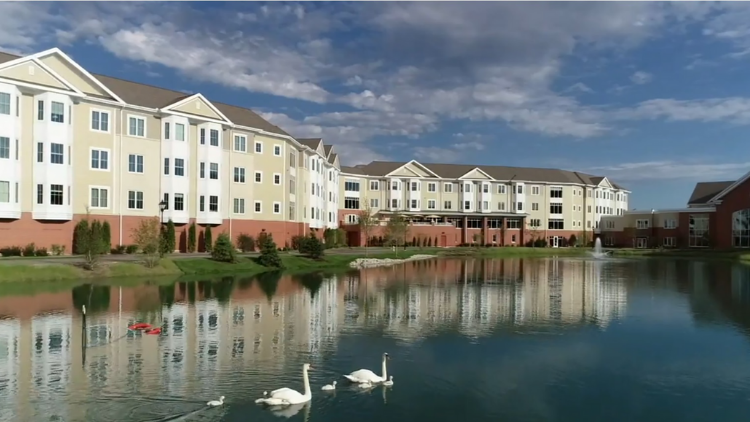Differences Between Rental Communities and Life Plan Communities

Rental senior living community… Life Plan Community … continuing care retirement community (CCRC)… Are they different, and does it matter?
To make an informed decision about your senior living options, it’s important to know about the contract structures at the different types of senior living communities and what you can expect to be included. Here’s what you need to know.
Rental Senior Living Communities
Choosing a rental community is a common step toward downsizing and moving into independent senior living. For some, it can make the most financial sense. But there’s more to consider than what you’d be paying today.
- Much like any residential agreement, residents sign a lease, either month-to-month or for an agreed-upon length of time — often, a year.
- There’s no entrance fee (sometimes known as a “buy-in”), but there will likely be a security deposit, which may or may not be refundable.
- In rare instances, a rental community might include a benevolence clause in the lease, which would allow you to continue living there if you deplete your financial assets and can no longer afford a residence. But a benevolence clause is the exception among rental communities.
- You can expect a variety of services and amenities built into your monthly payments. These will vary by community, but can include meals, housekeeping, maintenance, transportation, and on-site events and activities. In general, rental communities offer more a la carte services than Life Plan Communities. Always review the rental agreement to see what services are included and which will be added to your monthly fee as an extra cost.
- Rentals may or may not offer senior care. Many rental senior living communities provide independent senior living only. Others include assisted living services with your monthly fee, either in the residence or within a different area of the community. However, for higher levels of care, such as memory care or skilled nursing, you may have to pay full market rates for the care you need. If they don’t offer care services, you’ll have to move to a different provider.
Life Plan Community
Also known as a CCRC (continuing care retirement community), a Life Plan Community is a senior living community that offers independent living plus a continuum of care that typically includes assisted living, skilled nursing, rehabilitation services and memory care. Care is provided in the community, eliminating the worry about finding care in an emergency.
- Life Plan Communities require an initial entrance fee plus a monthly fee. While there’s an obvious upfront expense, this contract structure offers financial advantages that can save you money over time.
- The entrance fee secures lower rates for any future care you may need. The discount varies by community.
- Your monthly fee covers the costs of dining, activities and programs, services such as housekeeping and maintenance, classes and on-site cultural events, as well as the use of all community amenities.
- Most entrance fees are partially or fully refundable to you or your estate. The amount of refundability will vary by community, the contract you’ve chosen, and how long you live there.
- Benevolence clause: Because non-profit Life Plan Communities don’t pay out revenue with investors, many build an endowment to support residents in need. With a benevolence clause, you won’t be asked to leave the community, even if you outlive your financial resources.
- With the upfront investment of an entrance fee, a buy-in option may look more expensive. However, the plan for long-term care adds value and long-term confidence that’s worth considering.
There are different types of contracts available in Life Plan Communities.
- The most comprehensive contract (Type A, Life Care) allows for priority access to unlimited care at any level with no or minimal increase in your monthly fee.
- Other contracts offer more nuanced benefits, such as receiving a certain number of free days in the health center or being billed at a discounted rate only for the care you use.
When you consider the ever-rising costs of long-term senior care, these kinds of financial benefits can prove to be of tremendous value. You can use this tool to estimate the costs of future care in your area. It can help you plan ahead and figure out what type of contract is best for you.
The Value of a Presbyterian Homes Community
While a rental senior living community may be the right choice for some, our family of Life Plan Communities offers the kind of financial benefits that appeal to planners looking for lifelong value and security. In addition to offering an on-site continuum of care at predictable rates, you can be assured we put our residents first. As a nonprofit organization, our foundation has a $150 million endowment that will support any resident who outlives their assets through no fault of their own. Very few rental communities have that type of assurance.
If you’d like to learn more about our communities, or discuss the financial advantages of a Life Plan Community in comparison to a rental senior living community, use the contact form to request a personal appointment.



